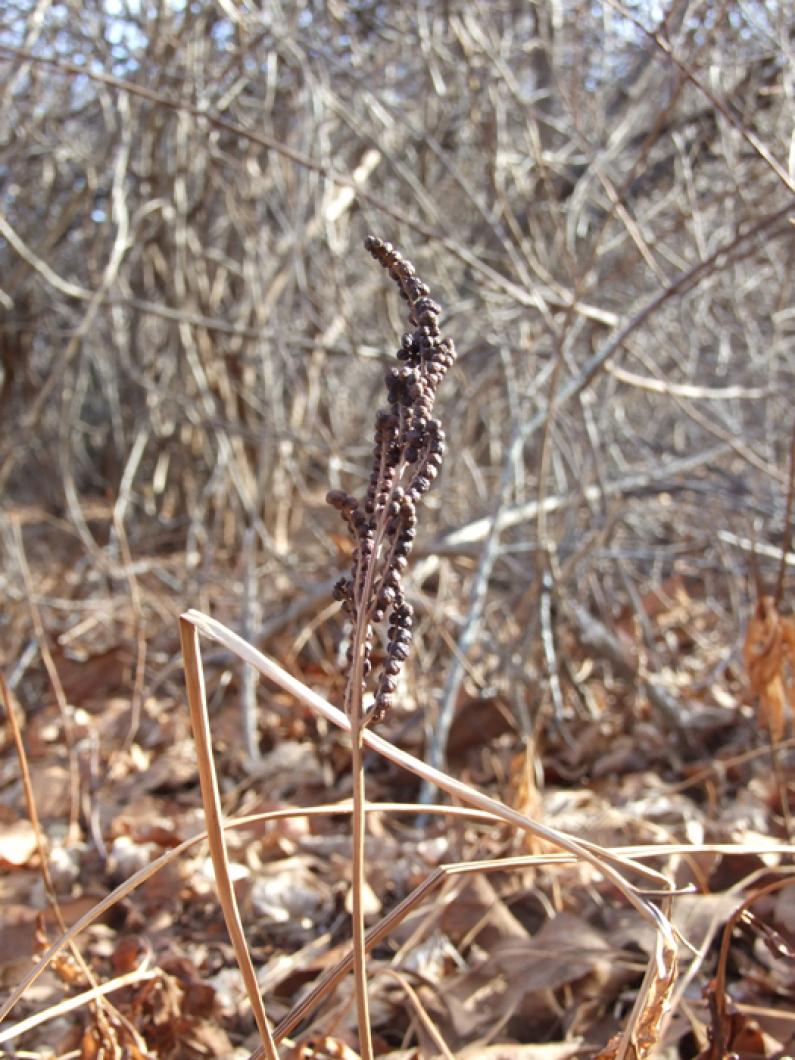If Edgar Allan Poe laid his eyes upon a fertile frond, he would no doubt have been profoundly affected. He observed that “Beauty of whatever kind, in its supreme development, invariably excites the sensitive soul to tears.”
Some can’t help but be sensitive. Edgar Allen Poe and the sensitive fern know this.
There is such a thing as a sensitive fern, and it is a bit dissimilar from most other ferns. And luckily, its differences didn’t cause excessive bullying, a lifetime of trauma, or the need for years of therapy.
The sensitive fern may be swayed by breezes, but it isn’t swayed by the majority of its peers. It is in a unique group, and comfortable (as all of us should be) with its rugged individualism and distinctive lifestyle.
Sensitive ferns may resemble other ferns on the outside, at least during the summer. They have green leaves, called fronds, which wilt and die at first frost (thus the name “sensitive”). These fronds emerge in the spring in the usual fiddlehead style. Since ferns are not flowering plants and do not have seeds — another mark of individuality in the plant world — they use spores to reproduce. Most ferns have spores on the underside of their fronds: These spores are released in the fall before the fronds wither, leaving nothing to identify the remaining plant in the winter.
Not so with the sensitive fern. During the summer, their fronds are more for appearance than for reproduction. Although their green fronds are present, these leafy greens are infertile, lacking spores on their undersides. Of the different ferns commonly found on Martha’s Vineyard, only the cinnamon fern shares this characteristic. It’s a pretty exclusive club.
Yet, somehow, sensitive ferns keep reproducing. The clue to their strategy is found in their independent streak, which allows easy identification and observation in the winter.
Now, in fact, is the time of year to see the fertile fronds that are the sensitive fern’s reproductive structures. They appear as one to one-and-a-half-foot stems; brown in appearance, and woody, bearing bead-like sacs. These sacs shelter its spores. (This is why sensitive ferns are also called bead ferns.) Just as in the old saying about not being able to see the trees for the forest, these fertile fronds of the plant were always present, but were green and hidden by the infertile ones during the course of the summer.
Each bead contains thousands and thousands of spores, and will persist through the winter, ripening and drying. I haven’t been able to locate any herbalist who cites a use for these ripening and drying spores, but beware: sensitive ferns are toxic to livestock and horses. Sensitive fern is even unpalatable to deer, which will assist this plant by eating around it, thereby reducing competition from other plants for sunligh t, nutrients and water. Though nothing definitive can be said about its toxicity to humans, research indicates that the forager should beware when seeking out edible fiddleheads and not collect by accident the emerging folded fronds of the sensitive fern.
After releasing their spores, the open bead-like structure of the sensitive fern can even sometimes “over-summer,” and can be present through the next. It is clearly a system that works, since this plant has been around since the time of the dinosaurs. Sensitive fern fossils have been found that date to over 60 million years ago. Though I have written about many amazing things in nature, a time span like that for the success of any species still leaves me absolutely speechless, if not ( like Edgar Allen Poe) in tears.
Suzan Bellincampi is director of the Felix Neck Wildlife Sanctuary in Edgartown.




Comments (1)
Comments
Comment policy »